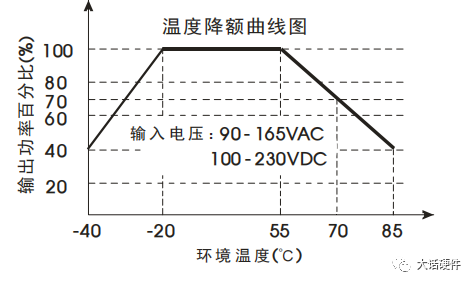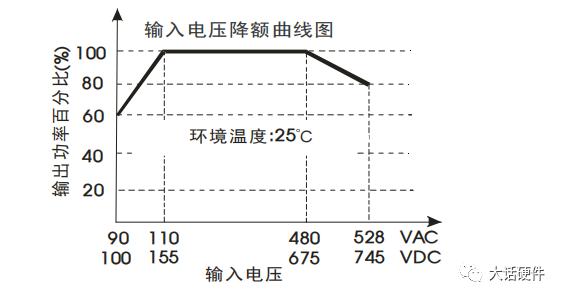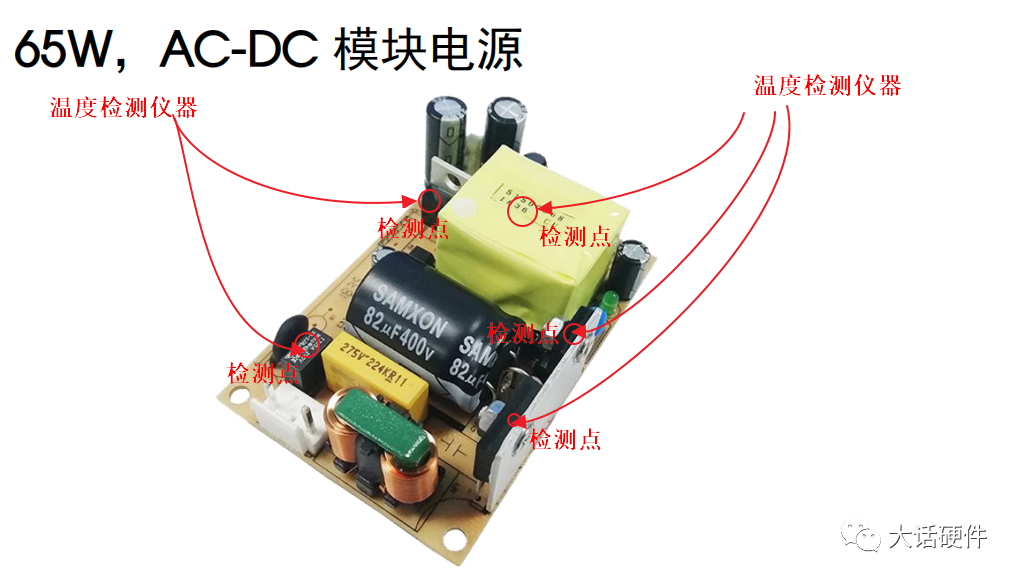-
Mail us
contact@tiger-transformer.com -
Phone us
(+86)15655168738
Mail us
contact@tiger-transformer.comPhone us
(+86)15655168738Today I want to write this article to share a knowledge point I learned some time ago - the derating curve of the power module.
Why write this? For students who specialize in power supply, it must be very simple. But for someone who is not in the power supply industry, it may not be completely clear how the curve should be interpreted and how it is tested in the industry.
The background of this question comes from the fact that I was preparing to do thermal design last week. I gave the power module specification sheet to my colleague for thermal design, and he asked me how I understood the derating curve in the specification sheet. Here we take Jinshengyang's module as an example. The power supply specifications of a module randomly found on the official website are as follows.

Watch When I read this specification, my initial understanding was that a power supply with a nominal name of 100W can output 100W power at -20~55℃, but when this module is placed in an environment of 70℃, it can only output 70W. power. So I told my thermal design colleague this understanding and asked him to pay attention to the temperature rise of the equipment.
This matter was originally considered over, because I felt that what I understood should be correct, and it was completely in line with the curve. But I have been thinking about a question in my mind: Jinshengyang Mingming designed a 100W power supply. How come it can only output 70W at 70℃? This is not in line with actual understanding! Could it be that if I put this power module at 70°C and add a 90W load, the entire module will not work? The theoretically designed output power of 100W has become an output capacity of 70W. Will the module not be able to carry a 90W load?
After having the above questions, I have not stopped thinking about the above, because from the perspective of power supply energy transfer, the device parameters of the 100W power supply I designed have not been changed, and the output capability cannot be changed for no reason. 70W. So I checked some information on power module derating design, and this solved my doubts.
1. In an environment of 70℃, the output capability of the power module becomes 70W?
No, in a 70℃ environment, this power module actually still has a 100W load capacity. Design is 100W, 100W at any temperature. The curve here is nominally derated to 70%, which means that at 70°C, you need to make this power module safe, stable, and work for a long time. The load must be controlled within 70W. It does not mean that the power module can only output 70W.
Assume that in an environment of 70℃, let the power supply carry 100W. After powering on for a while, the power supply can output 100W. However, it may quickly undergo over-temperature protection, or some components may be damaged, causing it to fail to work properly. .
2. Why is the derating reduced by 70%? What is the theoretical basis for this data?
The key factor that determines the output load of the power supply, that is, the degree of derating, is the temperature rise of the core components on the power module. For example, transformers, MOS tubes, diodes, high-power resistors, capacitors. If the temperature of these core components rises too high, the power module may break down quickly. Therefore, your load cannot be too high. The larger the load, the higher the temperature rise. If the above-mentioned core device parameters exceed the temperature limit, either the semiconductor device will fail or be protected due to overheating, or the capacitor life will be much lower than designed. Therefore, if you want this power module to work normally, it is safe to control the power within 70W.
In the same way, the following input derating curve is definitely not as superficial as before.

Follow According to previous understanding, this curve must be interpreted as: when the input voltage is below AC110V, the power module is not capable of outputting 100W. The current understanding is: when the voltage decreases, according to the principle that the lower the voltage, the greater the current, when the power is constant, there are rectifier diodes, common mode inductors and other devices in the input stage of the device. These devices generate greater heat under large currents. In order not to If the current flow capacity and temperature rise of these devices and other core devices are exceeded, the power of the power module needs to be controlled within a certain power, so that the current is within a certain range and will not cause damage to the device.
In order to verify whether the above understanding is correct, I asked a college classmate who specializes in power supply at Delta for advice. The classmate’s answer is basically consistent with my above understanding. At the same time, my classmates also told me how the power industry measured this curve.
It probably looks like the picture below. Find key components and components with higher temperature rise on the power module as temperature detection points. The thermal design has a special temperature probe to adjust the load capacity based on the temperature rise of key components not exceeding the safe temperature limit. After many tests, under which power the module can operate at this temperature for a long time, the output power at this time is the derated power.

Synchronization I also learned that some digital power supplies have a temperature monitoring function when performing derating design. The ADC feeds back the temperature read to the main control, and the main control limits the output load capability based on the temperature. The principle is essentially to limit the output power through the limiting conditions of certain devices (temperature, flow) to ensure that the module can work stably for a long time under high temperature and low voltage.
The power module derating curve should be relatively clear to those in the power supply industry. But for those who are not familiar with it, there are actually things that can be explored in a seemingly simple curve.